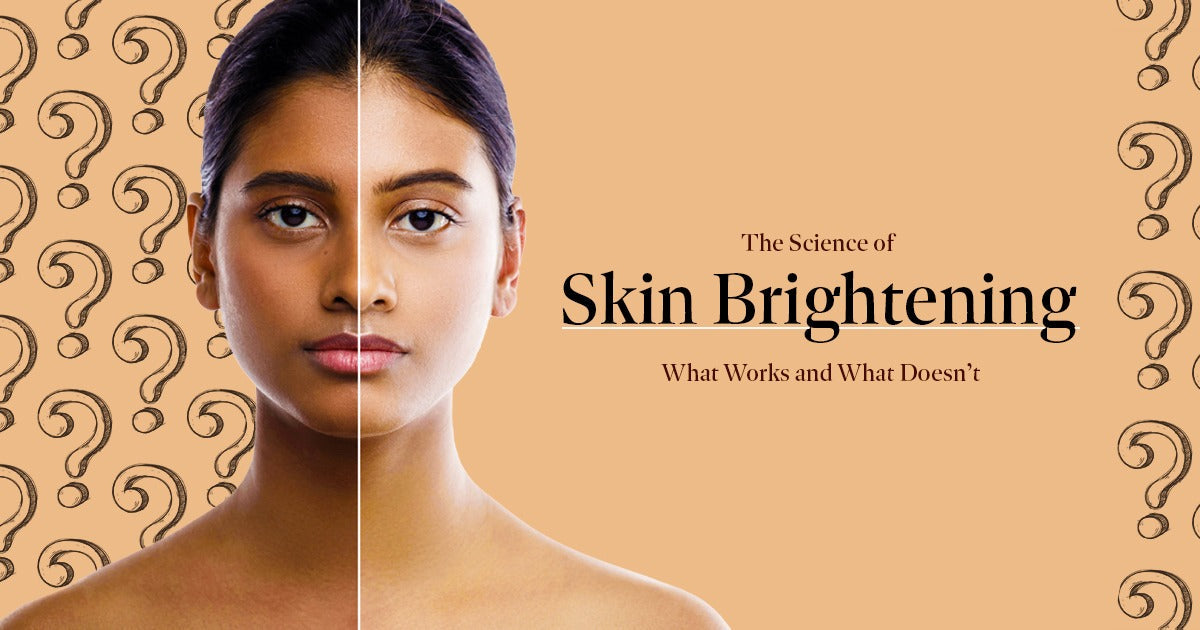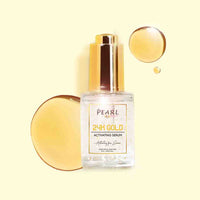Introduction About Skin Glow
Everyone wants to glow their skin and so use different skin care products. Many new products are being launched on the market to brighten their skin. To achieve radiant and glowing skin is a common skincare goal for many individuals. The world of skin lightening is a bit confusing as there are so many products and procedures out there that promise amazing outcomes. We will examine the science underlying skin lightning in this thorough guide, sorting fact from fiction and determining what works and what doesn't.
What Do You Understand About Skin Brightening
"Skin brightening" is the process of reducing hyperpigmentation, settling skin tone, and restoring brightness to the complexion. It involves addressing several factors that contribute to uneven and lifeless skin, such as UV exposure, stressors in the environment, and hormone swings.
How To Determine Skin Color
To Determine skin color, we must understand the role of melanin, the pigment responsible for skin tone variations. Melanin is produced by specialized cells called melanocytes in the epidermis, the outer layer of the skin. Its amount and distribution determine skin color.
To determine skin color, consider the following factors
Levels of Melanin
There are two primary forms of melanin: pheomelanin, which gives hues of red and yellow, and eumelanin, which gives brown and black tones. Darker skin tones are produced by higher melanin levels, while lighter skin tones are produced by lower amounts.
Genetics
Genetic factors play a significant role in determining melanin production and distribution. Individuals with ancestors from regions with high sun exposure tend to have higher melanin levels and darker skin tones.
Sun Exposure
As a UV protection strategy, exposure to the sun increases the formation of melanin. Long-term sun exposure can cause tanning because melanin shields the skin from UV ray harm by absorbing them. Overexposure can also result in sunburn and other solar damage.
Skin Undertone
An undertone refers to the subtle hue beneath the surface of the skin. Undertones are categorized as cool, warm, or neutral and can influence how colors appear on the skin's surface. Understanding melanin's role in skin color can help individuals determine their skin tone and choose appropriate skincare products, makeup, and clothing. It's essential to protect the skin from sun damage regardless of skin color by using sunscreen and practicing sun-safe activities.
Which Are The Most Successful Skin Brightening Techniques?
Topical Interventions
It has been demonstrated by science that substances like alpha hydroxy acids (AHAs), niacinamide, and vitamin C lighten skin to prevent the synthesis of melanin and encourage cell turnover. These components are present in masks, lotions, and serums that are made expressly to brighten.
Sun Protection
One of the main factors contributing to skin dullness and hyperpigmentation is sun exposure. Including a high-SPF broad-spectrum sunscreen in our daily skincare routine is essential to shield our skin from future harm and keep it looking radiant.

Expert Medical Care
Chemical peels, microdermabrasion, and laser therapy are among the treatments that can be helpful for stubborn pigmentation and improve the overall texture of the skin. Only licensed skincare professionals should perform these procedures to ensure patient safety.
Common Myths About Skin Whitening
Lemon Juice
Despite its popular reputation as a natural skin brightener, lemon juice might actually be excessively harsh and acidic for some people's skin types, which can result in irritation and sun sensitivity.
Homemade Remedies
Although homemade treatments like toothpaste masks and baking soda scrubs may seem nice, they might damage rather than heal the skin's natural barrier.
Skin Lightening Products
Although products containing mercury or hydroquinone are occasionally marketed as skin brighteners, they should be avoided due to their potential for serious negative effects.
ARM Pearl Skin Whitening Day Cream
The main components of ARM Pearl Day Cream are glutathione, and mulberry, are well-known for their ability to brighten and whiten skin. The body naturally produces glutathione, a potent antioxidant that is essential for avoiding oxidative damage and preserving skin health. Glutathione is well-known in the skincare industry as it helps to prevent the formation of melanin, the pigment that causes dark spots and uneven skin tone. Glutathione helps to brighten the complexion and provide a more even and luminous skin tone by decreasing the creation of melanin. On the other hand, mulberry extract is derived from the mulberry plant and is rich in vitamins, minerals, and antioxidants.
Mulberry extract contains compounds like arbutin and resveratrol, which have been shown to inhibit tyrosinase activity, an enzyme involved in melanin production. By inhibiting tyrosinase, mulberry extract helps lighten existing dark spots and prevent the formation of new ones, leading to a brighter and more uniform skin tone. When combined in ARM Pearl Day Cream, glutathione, and mulberry work synergistically to brighten and whiten the skin effectively.

Regular use of ARM Pearl Day Cream can help reduce the appearance of hyperpigmentation, age spots, and sun damage, while promoting a radiant and youthful complexion. With continued use, users can expect to see visible improvements in skin tone and texture, resulting in a brighter and more luminous appearance.
Conclusion
To achieve brighter and more radiant skin is possible with the right approach and understanding what truly works. By incorporating scientifically proven ingredients and treatments into your skincare routine and avoiding common misconceptions and harmful practices, we can effectively brighten our complexion and achieve the glowing skin you desire.










